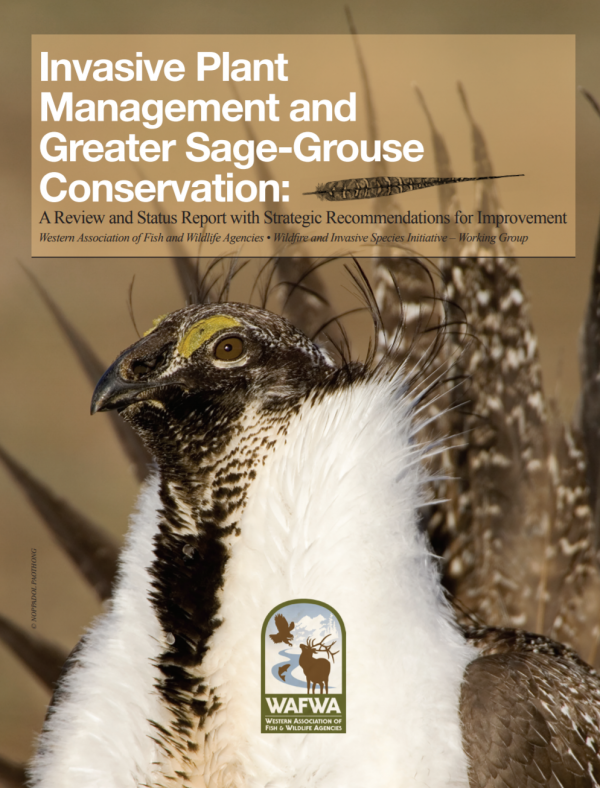In 2013, the U.S. Fish and Wildlife Service (USFWS) Conservation Objectives Team (COT) identified wildfire and the associated conversion of low- to mid-elevation sagebrush (Artemisia tridentata) habitats to invasive annual grass-dominated vegetation communities as the two primary threats to the sustainability of Greater sage-grouse (Centrocercus urophasianus, hereafter GRSG) in the western portion of the species range (USFWS 2013). To facilitate the examination and evaluation of the role fire and invasive plants play in the conservation of GRSG, the USFWS solicited the assistance of the Western Association of Fish and Wildlife Agencies (WAFWA) to conduct a collaborative assessment of the conservation challenges associated with the fire and invasive threat. The results of this collaborative effort led by WAFWA can be found in a series of recent publications. With respect to the management of invasive plants within the range of the GRSG, WAFWA assessed conditions and activities within the geographic range of GRSG, including parts of 11 states in the western United States and two Canadian provinces represented by the northwestern Great Plains, Great Basin, Snake River Plain, Colorado Plateau, and Columbia Basin.
Suggested Citation:
Ielmini, M.R., T.E. Hopkins, K.E. Mayer, K. Goodwin, C. Boyd, B. Mealor, M. Pellant, and T. Christiansen. 2015. Invasive Plant Management
and Greater Sage-grouse Conservation: A Review and Status Report with Strategic Recommendations for Improvement. Western Association of Fish and Wildlife Agencies. Cheyenne, Wyoming. 47 pp.
Attached Files
| File | Action |
|---|---|
| WAFWA Invasive Plant Management and Greater Sage-Grouse Report FINAL 3-28-15.pdf | Download |
- Version
- File Type pdf
- File Size 14.79 MB
- Publication Date March 1, 2015
